Hello, dear readers! Let’s start with a little imagination. Picture yourself holding a clutch that doesn’t just keep your essentials safe but also sparkles with golden threads, intricate patterns, and the richness of tradition.
That’s the magic of brocade, a fabric that has traveled centuries yet feels fresh and fashionable every single time we see it.
Brocade is not just cloth; it’s history woven with silk and metallic threads. Once worn by kings and queens in royal courts, today it has found a cozy place in our wardrobes and accessories.
So. let’s uncover the story behind Brocade Clutches…
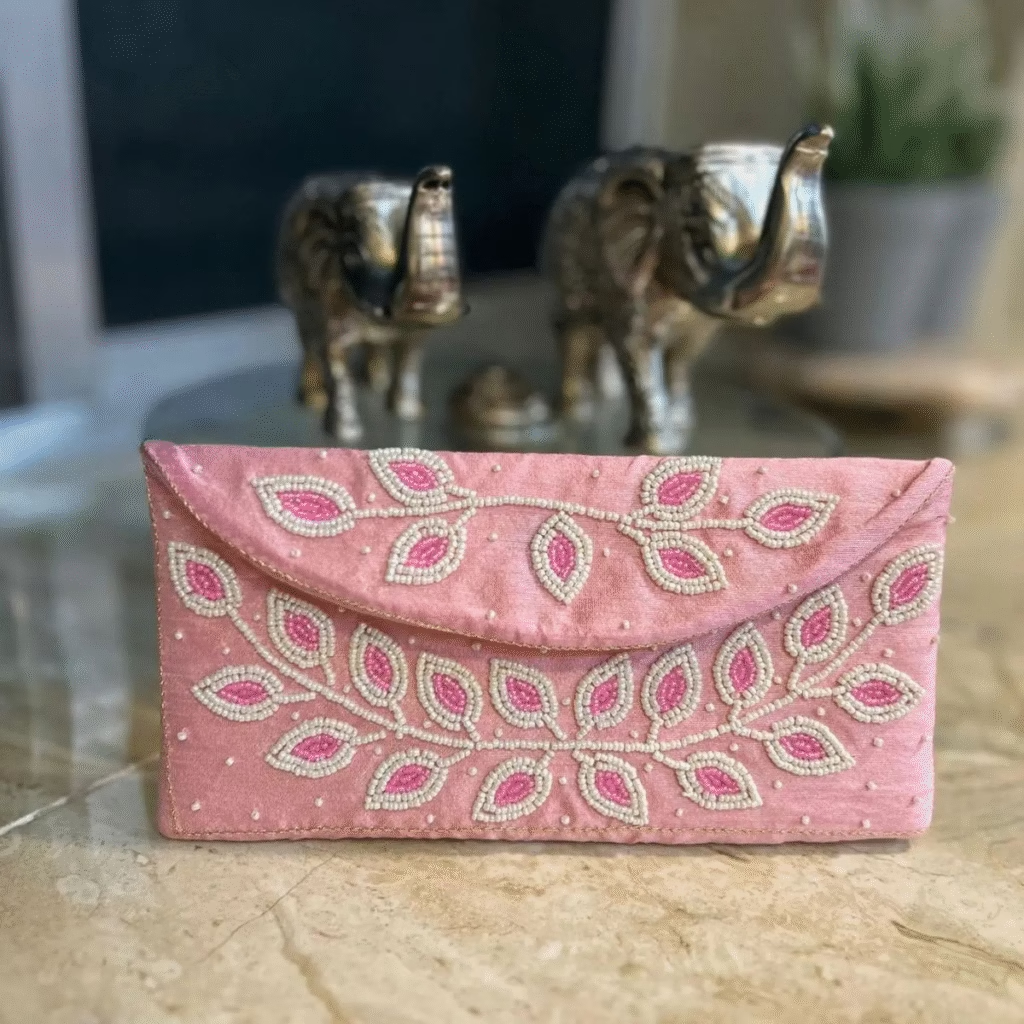
The Charm of Brocade in Modern Accessories
Brocade has always been a fabric of royalty, woven with shimmering silk and metallic threads that instantly catch the eye. What once adorned palaces, court gatherings, and royal attire has now found a beautiful new life in modern accessories. From handbags and clutches to belts, shoes, and even mobile covers, brocade has stepped out of its traditional image and entered everyday style with elegance.
The real charm of brocade lies in its versatility. Its bold motifs, rich textures, and sparkling patterns make even the simplest accessory look grand. Imagine carrying a brocade clutch with a plain dress—it instantly transforms your entire look, adding a touch of heritage and glamour without overwhelming the outfit.
What makes it even more special is the cultural story behind every weave. Owning a brocade accessory is like carrying a small piece of history, wrapped in timeless beauty, right into the modern world.
Material Used and Steps of Making Brocade
Brocade is not just a fabric—it’s an art form that combines luxury, tradition, and patient craftsmanship. Let’s explore what materials go into this royal weave and the detailed steps artisans follow to bring brocade designs to life.
🧵 Materials Used in Brocade
- Silk Threads
- Traditionally, the base of brocade is pure silk.
- Its smoothness and natural sheen create the perfect background for ornate designs.
- Traditionally, the base of brocade is pure silk.
- Cotton (Supporting Base)
- In some modern variations, cotton is used alongside silk.
- It gives strength and reduces the cost without losing richness.
- In some modern variations, cotton is used alongside silk.
- Metallic Threads (Zari)
- Gold or silver zari threads are the soul of brocade.
- They give the shimmering patterns that make the fabric royal and luxurious.
- Gold or silver zari threads are the soul of brocade.
- Dyes and Colors
- Natural dyes in reds, blues, greens, and yellows bring vibrancy.
- These shades help motifs stand out against the silk base.
- Natural dyes in reds, blues, greens, and yellows bring vibrancy.
- Looms and Tools
- Special drawlooms or jacquard looms are used.
- These allow artisans to weave complex motifs with precision.
- Special drawlooms or jacquard looms are used.
🪡 Steps of Making Brocade
- Designing the Motifs
- Every brocade begins with a design, usually floral, paisley, or geometric.
- Skilled designers draw patterns on graph paper to guide the weaving process.
- Every brocade begins with a design, usually floral, paisley, or geometric.
- Preparing the Loom
- The loom is set up with warp (vertical threads) and weft (horizontal threads).
- This setup may take several days depending on fabric size and design complexity.
- The loom is set up with warp (vertical threads) and weft (horizontal threads).
- Dyeing the Threads
- Silk threads are carefully dyed using natural or synthetic colors.
- The dyed yarn is dried and polished for an even, glossy finish.
- Silk threads are carefully dyed using natural or synthetic colors.
- Weaving the Base Fabric
- Artisans weave the plain base first, usually in silk or cotton.
- This forms the foundation for adding metallic designs.
- Artisans weave the plain base first, usually in silk or cotton.
- Adding Zari Patterns
- Metallic threads (zari) are interlaced into the fabric using jacquard cards.
- Each card corresponds to a design, controlling how motifs appear on the fabric.
- Metallic threads (zari) are interlaced into the fabric using jacquard cards.
- Creating Intricate Motifs
- Florals, vines, and geometric shapes are woven in shimmering zari.
- Some designs even use multiple colors of metallic threads for richness.
- Florals, vines, and geometric shapes are woven in shimmering zari.
- Finishing the Fabric
- After weaving, the brocade is carefully washed and polished.
- Edges are checked, and loose threads are trimmed for a smooth finish.
- After weaving, the brocade is carefully washed and polished.
- Crafting into Accessories
- Finally, brocade fabric is cut and stitched into clutches, bags, or other accessories.
- Skilled artisans ensure motifs are placed beautifully, highlighting the royal patterns.
- Finally, brocade fabric is cut and stitched into clutches, bags, or other accessories.
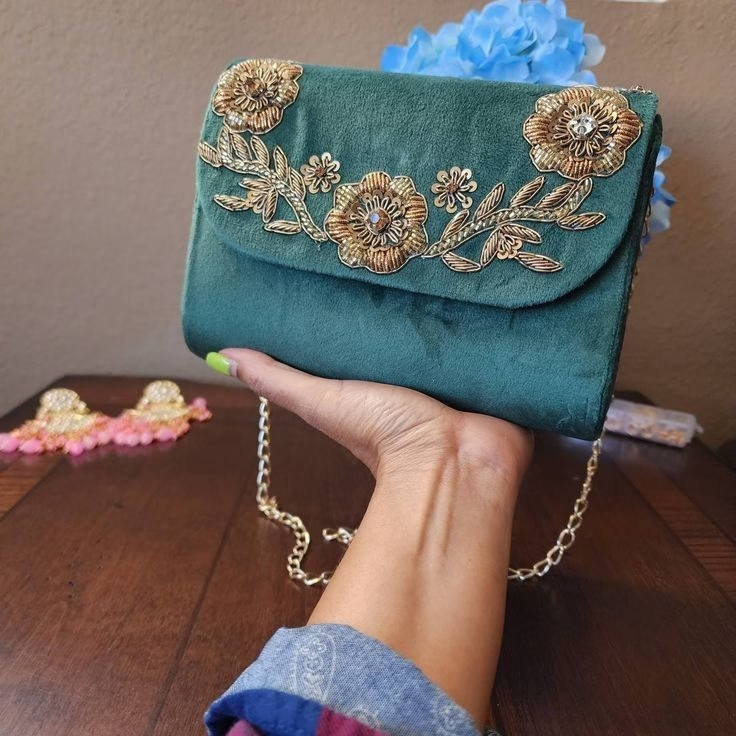
Symbols and Motifs in Brocade: Stories Woven in Threads
Brocade is more than just a luxurious fabric—it is a storytelling canvas where every motif reflects culture, faith, and beauty. These patterns, woven in shimmering threads, are not chosen randomly. They hold meaning, narrate tales of tradition, and celebrate the artistry of generations. Let’s explore these symbols and motifs in detail.
🌸 Floral Patterns: Blooming Elegance
- Lotus
- The lotus is one of the most recurring motifs in brocade.
- It represents purity, spiritual growth, and resilience, as it blooms gracefully even in muddy waters.
- In brocade clutches, the lotus adds a soft, divine touch, making the accessory perfect for weddings or rituals.
- The lotus is one of the most recurring motifs in brocade.
- Vines and Creepers
- Flowing vines, often woven along the borders, symbolize continuity and life’s eternal thread.
- They bring fluidity to the design, enhancing both symmetry and grace.
- Flowing vines, often woven along the borders, symbolize continuity and life’s eternal thread.
- Bouquets and Petals
- Entire bouquets of flowers or scattered petals across the fabric create a festive and celebratory feel.
- These patterns make brocade accessories radiant and lively.
- Entire bouquets of flowers or scattered petals across the fabric create a festive and celebratory feel.
🦚 Animal and Bird Motifs: Grace and Grandeur
- Peacock
- A favorite in Indian textiles, the peacock is the national bird of India.
- In brocade, it symbolizes beauty, pride, and prosperity.
- Its detailed feathers shimmer magnificently when woven in zari, making any fabric look regal.
- A favorite in Indian textiles, the peacock is the national bird of India.
- Elephant
- Elephants represent wisdom, power, and royal dignity.
- In brocade, their motifs add a majestic presence, reminding us of palaces and grand processions.
- Elephants represent wisdom, power, and royal dignity.
- Parrots and Swans
- Parrots symbolize love and liveliness, while swans signify purity and grace.
- These motifs, often woven in borders or panels, bring a gentle charm to the weave.
- Parrots symbolize love and liveliness, while swans signify purity and grace.
🔱 Mythical and Sacred Motifs: Anchored in Belief
- Conch Shell (Shankha)
- Symbol of auspicious beginnings and linked to Lord Vishnu.
- In brocade, it represents blessings and spiritual energy.
- Symbol of auspicious beginnings and linked to Lord Vishnu.
- Kalash (Sacred Pot)
- Seen as a vessel of abundance and life.
- Motifs of kalash in brocade remind wearers of prosperity and well-being.
- Seen as a vessel of abundance and life.
- Chakra (Wheel)
- Represents eternal movement, balance, and cosmic order.
- Woven repeatedly, it creates rhythm and harmony in the design.
- Represents eternal movement, balance, and cosmic order.
♦️ Geometric Patterns: Order and Symmetry
- Diamonds (Rhombus)
- Stand for prosperity, perfection, and balance.
- Diamonds woven in zari sparkle subtly, catching light at every angle.
- Stand for prosperity, perfection, and balance.
- Checks and Stripes
- Provide structure to flowing silk.
- Represent clarity and order, giving a balanced look to clutches or sarees.
- Provide structure to flowing silk.
- Circular Motifs
- Symbolize unity, wholeness, and the eternal cycle of life.
- They act as a meditative design, soothing to the eye.
- Symbolize unity, wholeness, and the eternal cycle of life.
🌿 Nature Motifs: A Slice of Everyday Life
- Leaves and Trees
- Reflect fertility, growth, and connection with the environment.
- These motifs highlight the artisan’s deep bond with nature.
- Reflect fertility, growth, and connection with the environment.
- Fruits
- Grapes and mango motifs often appear, symbolizing abundance, festivity, and sweetness of life.
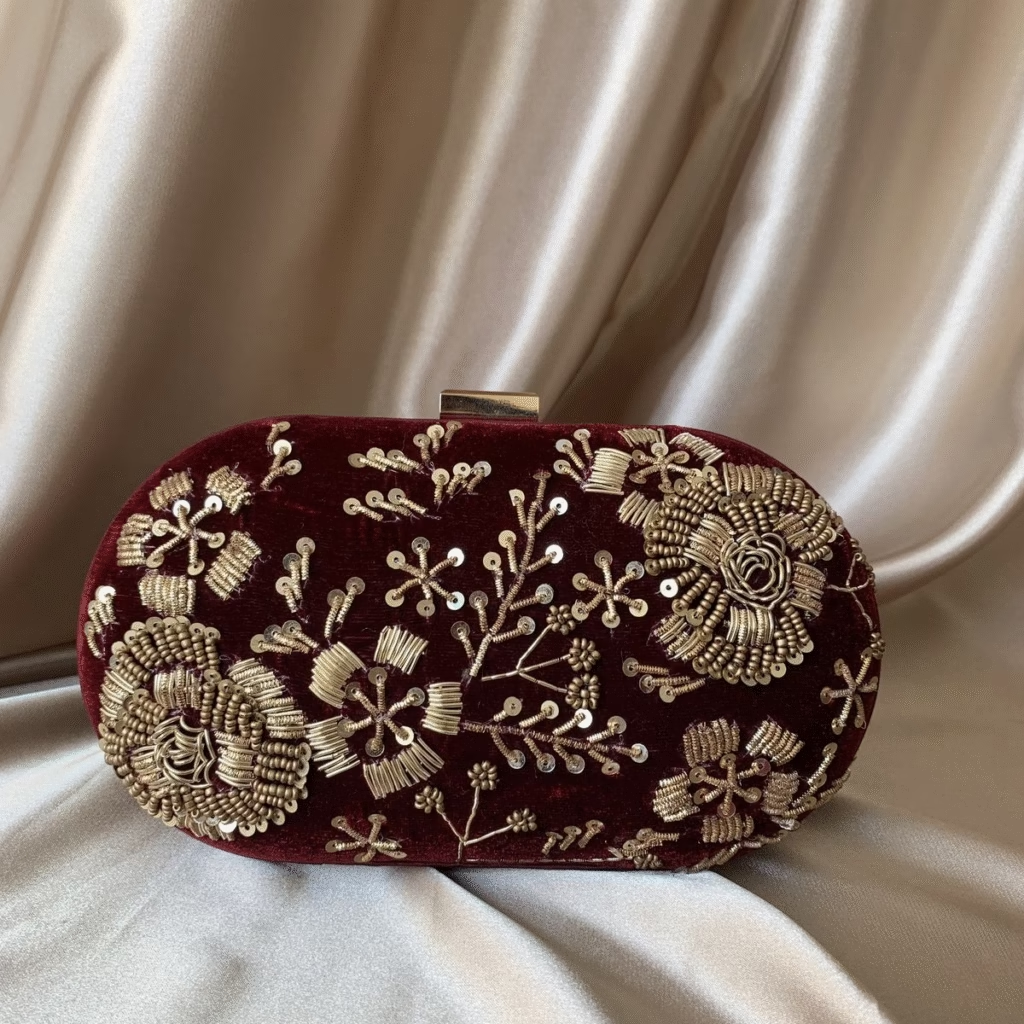
Brocade in Numbers: Interesting Facts and Statistics
Brocade, with its shimmering zari work and timeless motifs, isn’t just a symbol of culture and beauty—it’s also a fascinating subject when you look at the numbers. From its global market reach to artisan livelihoods, brocade’s story is filled with figures that reveal its true scale and importance. Let’s dive into some interesting statistics and facts.
📊 Global Textile Market and Brocade’s Share
- The global luxury textile market is estimated at $120 billion (2024), and brocade is a significant contributor within the heritage and luxury fabric segment.
- India alone contributes nearly 20–22% of the world’s handwoven textiles, with brocade as one of its most recognized forms.
- Banarasi brocade, in particular, is exported to over 40 countries, including the U.S., UK, and Middle Eastern nations.
👩🏭 Artisans and Craft Clusters
- Brocade weaving is centered mainly in Varanasi, Uttar Pradesh, with around 1.2 lakh weavers directly involved in the craft.
- Across India, nearly 5 lakh people (including dyers, designers, and traders) depend on brocade for their livelihood.
- A study in 2023 found that 68% of artisans still use traditional handlooms, while the rest have shifted to power looms for higher output.
💰 Economic Value of Brocade
- Banarasi brocade sarees alone account for a market worth of ₹5,000 crore annually in India.
- Exports of brocade-based products—like stoles, clutches, and upholstery—have grown by 12–15% annually over the last decade.
- Luxury accessories like brocade clutches are now a rising trend, with sales increasing by nearly 20% in urban markets in the past five years.
🌍 Brocade and Sustainability Trends
- With global demand for sustainable fashion growing at 10% annually, handwoven brocade is regaining popularity as an eco-luxury choice.
- Over 40% of young buyers (millennials and Gen Z) in India say they prefer handcrafted textiles like brocade over synthetic fabrics.
- The use of natural dyes and traditional weaving methods in some clusters makes brocade a part of the global slow fashion movement.
✨ Fun Facts in Numbers
- A single brocade saree may take anywhere from 15 days to 6 months to complete, depending on the complexity of motifs.
- Gold and silver zari threads used in brocade can weigh up to 30–40 grams in a heavily woven saree.
- Some vintage brocade fabrics have been valued at over ₹10 lakhs, making them collectors’ items.
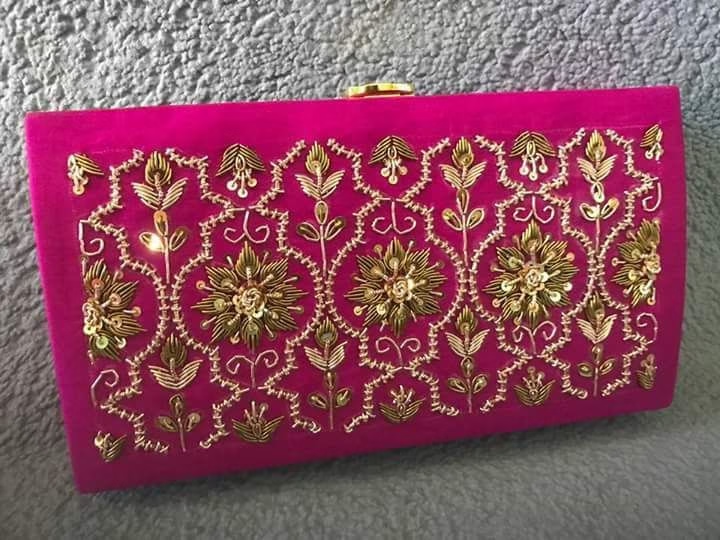
Sustainability and Craft Preservation: Keeping the Weave Alive
Brocade weaving is not only about shimmering zari and intricate motifs—it is also about sustaining communities, traditions, and the environment. In today’s fast-fashion world, the survival of brocade depends on how we balance heritage preservation with eco-conscious choices. Let’s explore this in detail.
🌿 Eco-Friendly Aspects of Brocade
- Natural Fibres
- Traditionally, brocade is woven using silk and cotton, both biodegradable and eco-friendly.
- This makes brocade a sustainable alternative to synthetic fabrics like polyester.
- Traditionally, brocade is woven using silk and cotton, both biodegradable and eco-friendly.
- Natural Dyes
- Many artisans still rely on plant-based or mineral dyes.
- These dyes reduce water pollution and create rich, earthy tones that last longer.
- Many artisans still rely on plant-based or mineral dyes.
- Durability
- Brocade is strong and long-lasting, often passed down for generations.
- This longevity reduces the culture of disposable fashion.
- Brocade is strong and long-lasting, often passed down for generations.
👩🏭 Livelihoods and Community Well-Being
- Weaver Families
- Over 1 lakh weavers in Varanasi alone depend on brocade weaving.
- Preserving this craft means securing livelihoods for generations.
- Over 1 lakh weavers in Varanasi alone depend on brocade weaving.
- Women Artisans
- Many women are engaged in reeling, dyeing, and embroidery.
- Supporting brocade also empowers women in rural communities.
- Many women are engaged in reeling, dyeing, and embroidery.
- Skill Transmission
- Weaving is taught within families, with skills passed down like heirlooms.
- Encouraging young weavers ensures the craft does not fade away.
- Weaving is taught within families, with skills passed down like heirlooms.
🏛️ Government and NGO Initiatives
- Geographical Indication (GI) Tag
- Banarasi brocade received a GI tag in 2009, protecting its authenticity.
- This helps prevent cheap imitations from overshadowing genuine handwoven work.
- Banarasi brocade received a GI tag in 2009, protecting its authenticity.
- Skill Development Programs
- NGOs and state bodies conduct training workshops to help artisans adapt designs for modern markets.
- These programs often focus on blending tradition with innovation.
- NGOs and state bodies conduct training workshops to help artisans adapt designs for modern markets.
- Financial Support
- Schemes like Mudra loans and Handloom Weavers’ Credit Cards offer financial aid to sustain small weavers.
- Schemes like Mudra loans and Handloom Weavers’ Credit Cards offer financial aid to sustain small weavers.
🌍 Modern Sustainability Movement
- Slow Fashion Appeal
- Consumers today are leaning towards handwoven, eco-friendly products.
- Brocade fits perfectly into this movement with its artisanal and sustainable character.
- Consumers today are leaning towards handwoven, eco-friendly products.
- Fusion in Accessories
- Brocade clutches, belts, and shoes bring sustainability into daily life.
- These products make eco-fashion more accessible to modern consumers.
- Brocade clutches, belts, and shoes bring sustainability into daily life.
- Global Recognition
- International designers increasingly highlight brocade as part of sustainable luxury fashion.
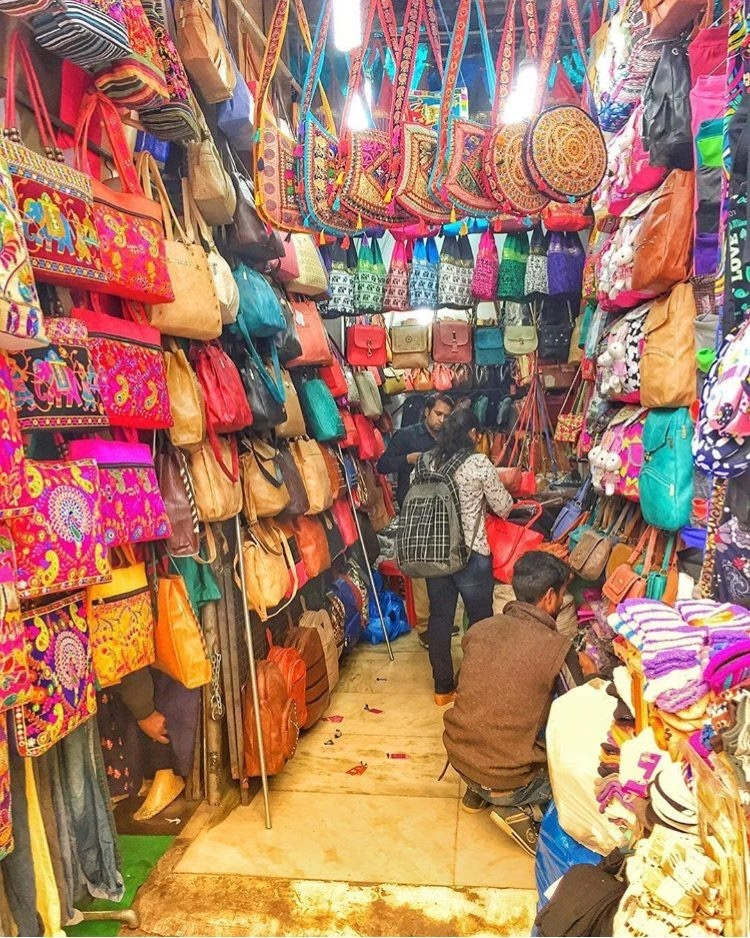
Where to Find the Best Brocade Clutches
- Local Handloom Markets – Cities like Varanasi, Delhi (Dilli Haat), and Jaipur are hubs for authentic brocade clutches.
- Designer Boutiques – Luxury fashion houses often reinvent brocade into contemporary clutch designs.
- Online Platforms – Trusted e-commerce sites and artisan-led platforms like Jaypore, Fabindia, and Okhai showcase curated collections.
- Craft Fairs and Exhibitions – Handloom expos and textile fairs bring authentic clutches directly from weavers to buyers.
- Global Stores – International concept stores increasingly stock Indian brocade accessories for global audiences.
🔍 How to Spot Real vs. Fake Brocade Clutches
- Check the Fabric Texture – Authentic brocade feels heavy, rich, and slightly raised due to the woven zari. Fake ones often look flat and plasticky.
- Look at the Zari Work – Real zari threads shine subtly in gold or silver tones, while fakes use cheap metallic paint or synthetic fibers.
- Examine the Motifs – Traditional motifs (lotus, peacock, paisley) are intricate and detailed in originals, but fakes often have blurred, printed designs.
- Feel the Weight – Genuine brocade has a sturdy feel because of silk and metallic threads. Lightweight clutches may be machine-printed imitations.
- Price Point – If the price seems too low, it’s likely not authentic handwoven brocade. Real craftsmanship comes at a fair value.
- Ask for Craft Details – Authentic sellers often share the weave’s origin, artisan details, or even GI tags for Banarasi brocade.
Wrapping-Up
Brocade clutches are more than just pretty bags, they are little pieces of art that carry tradition with style. The golden threads, rich colors, and woven patterns add a royal charm to any outfit, whether you are dressing up for a wedding or keeping it simple for an evening out.
They remind us of the hard work of weavers and the timeless beauty of Indian craft. Simple yet grand, a brocade clutch is the perfect way to hold culture in your hands while looking modern and stylish.
So next time you step out, let your brocade clutch be a stylish reminder of how beautifully tradition can meet trend.
Also read:- Kaasu Malai to Coin Earrings: How Ancient Gold Designs Are Trending on Social Media

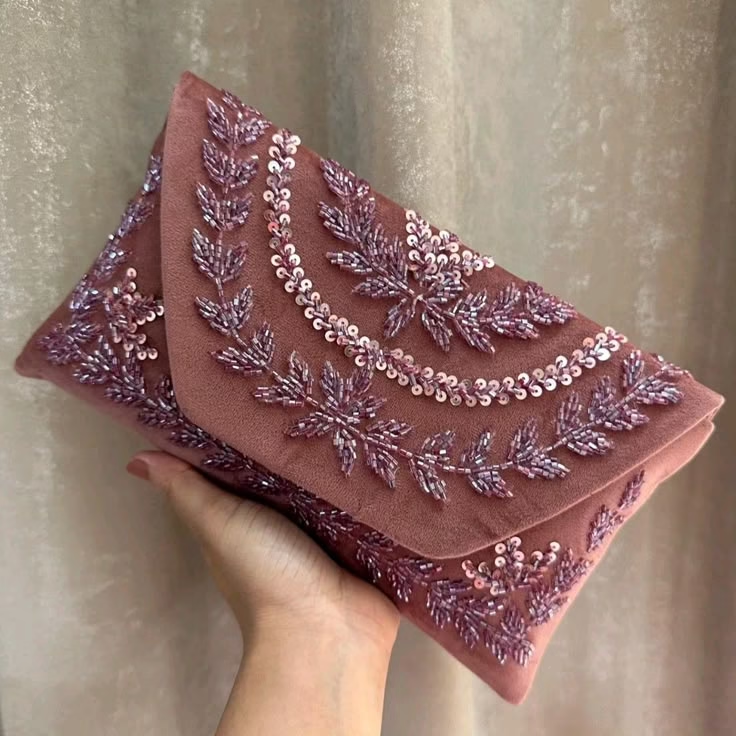
Leave a Reply